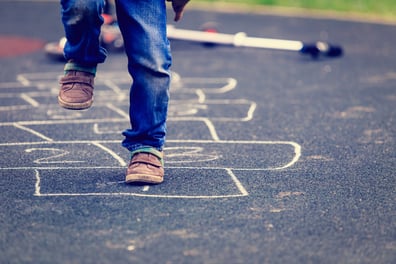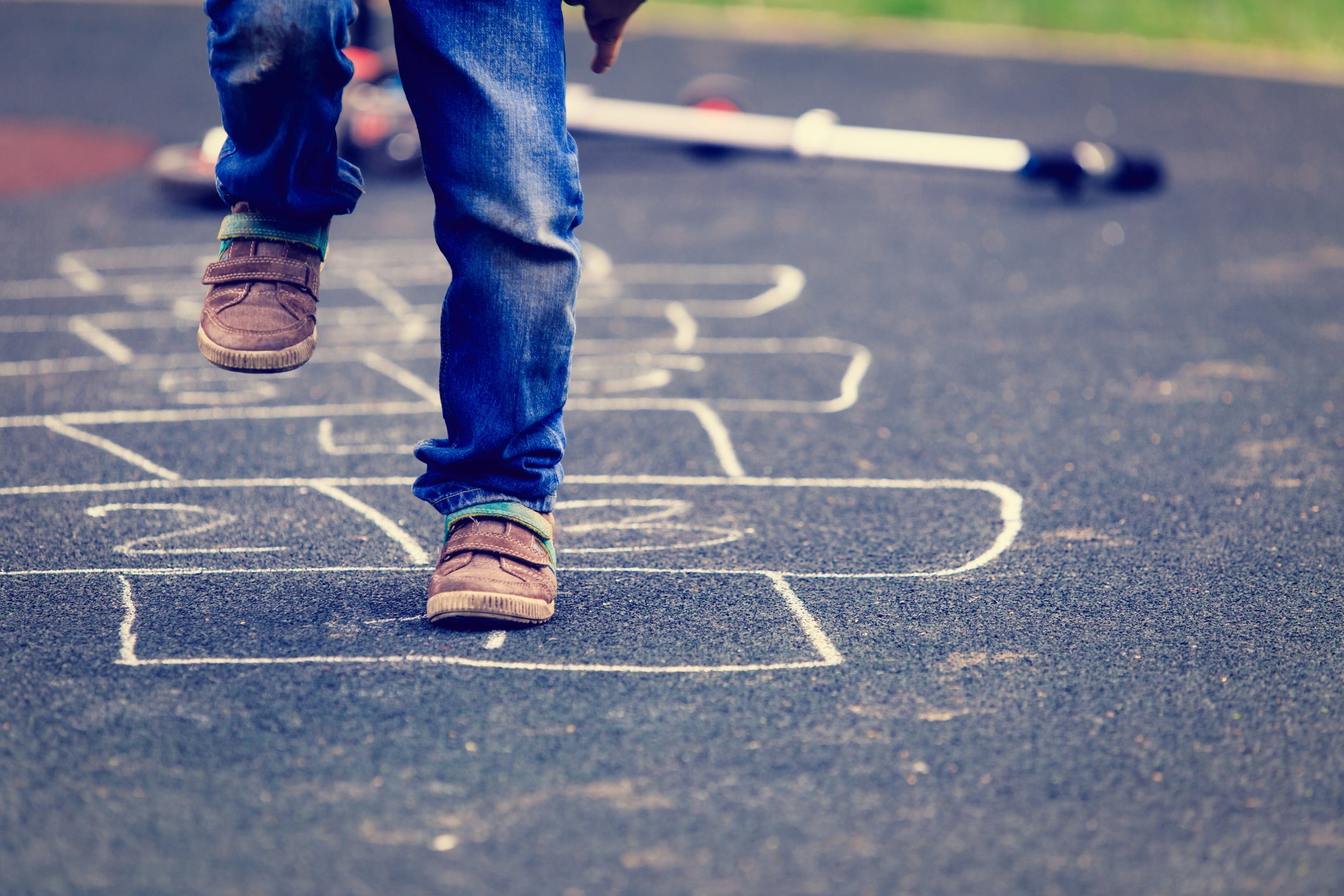 When we say that hopscotch is an old-fashioned form of fun, we aren’t kidding. Some experts believe it was created back in Ancient Rome, if you can imagine that. One group suggests that Roman soldiers participated in the activity on 100-foot-long hopscotch courses, dressed in heavy armor, to build endurance. Others believe that the modern game comes from an earlier version played by Roman children.
When we say that hopscotch is an old-fashioned form of fun, we aren’t kidding. Some experts believe it was created back in Ancient Rome, if you can imagine that. One group suggests that Roman soldiers participated in the activity on 100-foot-long hopscotch courses, dressed in heavy armor, to build endurance. Others believe that the modern game comes from an earlier version played by Roman children.
Meanwhile, Wikipedia states that this game was first mentioned in print in English more than 300 years ago, although it was usually called “scotch-hop” or “scotch-hopper.” No matter how and when this game was invented, it has clearly stood the test of time and can still be enjoyed by young children today.
How to Play: the Basics
If you haven’t played or have forgotten specifics, a court is typically drawn with chalk on a sidewalk. Usually, the court starts with a rectangle labelled 1. Above that, there are side-by-side squares numbered 2 and 3; above that, a rectangle labelled 4; above that, side-by-side squares numbered 5 and 6. Then, there is a rectangle labelled 7; above that, side-by-side squares numbered 8 and 9, topped off by a square labelled 10.
Players each find a stone and player one tosses it on the first rectangle; the stone must land completely in this area and can’t even touch a line. If the toss was successful, then player one hops the course from beginning to end, and back to the beginning again, not stepping on the area with the stone. Single rectangles must be hopped on with one foot, side-by-side squares with a foot in each one. When player one returns to the area labelled 1, the stone is picked up— and then, standing at the beginning of the court, the stone is tossed into area number 2. The process continues as long as player one does so without error. Once he or she loses balance, steps on a square or misses one, player two gets a turn. The first player who completes the entire course first wins.
Benefits of Hopscotch
Don’t let the simplicity of this game fool you. There are countless benefits of hopscotch for your child; this Moving Smart blog post lists 11 of them (yes, 11!). You’ll want to read the entire article, but here are highlights:
- “For kids, it feels good to move, and when it feels good, they want to do it over and over again... just as the rules of Hopscotch require.”
- This game helps children to master body control.
- Hopscotch also helps children to manage body rhythm, which is the core of numerous other skills.
- Movements involved build body strength, balance, eye/hand coordination and more.
- It’s a great “social campfire” for young children.
Bonus: Math Aptitude
This game involves numbers, and counting skills are naturally developed as children participate. Imagination Soup recommends another variation that makes learning numbers and math fun in multiple ways. Instead of creating the standard hopscotch course, create a 5-by-5 grid, numbering squares in order from 1 to 25. For young children, suggest that they hop from 1 to 5; then from 1 to 10; from 1 to 15; and from 1 to 20—and then 25.
As your child gets older and more number-savvy, ask him or her to hop on even numbers only, in order, then on odd ones. You can even use this grid to teach addition, subtraction and multiplication.
Looking for more ways to enrich your child’s life? Horizon Education Center provides affordable quality care including educational and enrichment opportunities for children in the following Northeast Ohio locations.






